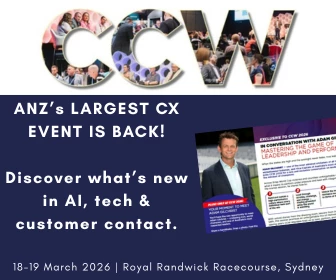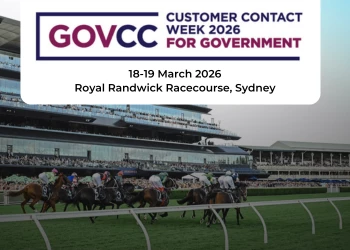2017 Customer Experience Predictions: Top Influencers Weigh In
Add bookmarkThe New Year is underway. That means we can expect short-lived commitments to hit the gym, unwise procrastination about doing our tax returns, and an abundance of discussion regarding pressing customer experience objectives.
To help navigate that sea of perspectives about the key trends, challenges, technologies and strategies customer experience professionals must acknowledge this year, we asked some of the Top Customer Experience Influencers to share their 2017 outlooks.
Some acknowledged key challenges. Others focused more on solutions and recommendations.
All provided insight into what customer experience leaders – and, really, all business leaders – must address and conquer as 2017 unfolds.
Customer-centric organizations will be pursing excellence in two primary (and seemingly contradictory) areas during the course of 2017. While there will continue to be a major shift toward automation and enhanced support technologies, we will also see a significant focus on developing customer relationships and the human element. When great technology is leveraged by great people, it will result in the type of outstanding customer experience we are all capable of.
One of the greatest challenges in 2017 for customer service is for organizations to find ways to remain human in the midst of fantastic new digital technologies in customer service. Technological advances such as AI and chatbots in customer service must be used to augment the human connection with customers, not replace it.
- Phone. Over the last year or so, many organisations have gone big on the implementation of new technology that will help them upgrade their customer service/experience. However, research shows that customers still want to talk to someone when things go wrong or get complicated or that might just one their preference. Therefore, I hope that firms don’t forget the value and importance of great phone service.
- Balance. Related to this, other research shows that some firms have overshot their human-tech mix when designing their service and experience. I hope that firms start to pay attention to and continually assess what is the appropriate mix and the right balance of human touch and technology in their customer service//experience.
- Awareness. Thirdly, many organisations when they encounter a problem jump to ‘fix’ mode and quickly move towards buying new tools, technology, processes or systems, etc in order to fix the problem. The challenge with this type of behaviour is that, in many cases, nothing much changes once they have applied their 'fix' and their problem persists. Therefore, I would like to see organisations become more aware of how they behave such that when they notice or recognise a problem that they first seek to truly understand it and then imagine what a future state might look like before they jump into fix mode. Going a little slower will allow them to make better decisions, investments and, more likely, generate better returns.
- Agile. Everyone else is becoming more agile but why isn’t the contact centre? Many organisations are going through a customer experience and digital transformation and are doing so by adopting more agile ways of working. However, most of the agile teams and initiatives seem to be digital and technology focused. Why hasn’t agile hit the contact centre yet? What could happen if contact centres become more agile in their approach? And, is it possible to make contact centres more agile whilst still moving the key metrics that matter to the business? I’d like to see ‘agile’ approaches become more prominent in the contact centre space and how these type of approaches (agile, service design and systems thinking etc) can deliver greater value to the customer throughout their journey.
2017 will be the year that most mainstream organizations begin to evaluate the potential benefits that augmented reality and mixed reality can have on their relationships with customers. A few customer experience leaders, like Lowe’s and Sephora, are already using augmented reality to enhance the customer experience, and we will see more movement in this direction this year. 2017 will not be "the year of augmented reality" — we’re a few years from that still — but it will be the year in which organizations start to kick the tires in a serious way.
In 2017, organisations around the world need to look very long and hard at themselves in the mirror when it comes to Customer Experience. As we motor on towards the end of another decade, can they truly say they are delivering a more customer centric experience than they were in 2016… or 2010… or 2005? Every year we see the volume and rhetoric increase from business leaders all across the world, yet the words are still largely failing to translate into hard, tangible action. As the economic environment becomes ever more challenging, those who put serious investment and resources into actually and genuinely improving the employee and customer experience are the ones who will be winning in their respective industries by January 2018.
My hope for 2017 is that businesses focus more on the foundation of great customer service:
- provide the "cheerful giving of attention"
- anticipate the customer's needs/wants/desires
- provide a memorable experience
- understand that a successful business starts and ends with a "customer-first mindset"
- Data and information will evolve as a crucial competitive resource for executing corporate revenue strategy.
- Entrepreneurs and small businesses will drive the creative engine for marketing goods and services to millennials, and their companies will exploit the weaknesses of entrenched marketers.
- Retailers – both online and offline - will transition to presence in “Lifestyle Centers” that integrate offices, residences, groceries, restaurants, and gyms. Standalone shopping malls will continue to decline as a retail channel.
Customer expectations are getting forever higher and this is likely to continue in 2017 (and beyond!). Customers want speedy, personalised responses, and I feel the businesses that can combine technology to make the customer experience faster and easier with the personalised ‘human touch’ are the ones that will win.
2017, in my opinion, should be the year for all companies to “Think Like a Customer.” We must remember . . . we are all customers of one another.
Operations – treat your employees as your greatest asset, ask their opinions, find out from them what your customers like and/or dislike about you, consistently train/coach/mentor, define career paths and genuinely appreciate a job well done.
Technology – I agree with my colleagues about using the cloud and omni-channel to create a better customer experience. However, I think Artificial Intelligence (AI) and Internet of Things (IoT) is what customers want. AI and IoT create the valuable response of what customers expect, is not “big brother watching” and is the ultimate delivery of your understanding of a customer’s journey during their life with your company.
Forward thinking companies are accepting that customer experience is the competitive weapon of choice. Products have little differentiation anymore and retailers can sell most any product. So, how do you compete? Customer experience. The experience difference between online and brick and mortar is obvious. One is not necessarily better than the other, but depends on preference. Leverage your ability to provide unique or at least memorable customer experience whether online, face-to-face, both or some combination. Be remarkable and people will remark about you.
The survey monkey will be kicked out of its cage as more realize to develop and engage agents they need more than a short and simple survey. As bots and self-service grow in use (and the simple goes away), the vital interaction between customers and agents requires greater insight gathering and interpretative skills to capture competitive advantages.
- 2017 will be an exciting time for the Customer Experience, as innovation proceeds at breakneck pace, and customer expectations become ever higher. Differentiation between brands embracing forward-thinking CX, and those which lag behind, will become critical to customer loyalty and brand survival. Adding a human touch to CX automation will be a consistent theme. Here are our predictions for 2017:
- CX becomes Present, Personal, and Predictive. Less and less often will customers have conduct intensive searches for the products, services, and help they need. As marketing and customer service become more deeply context-aware – through IoT, wearables, and embedded services – the right messages and offers are delivered proactively at the right moment.
- Conversational interfaces go mainstream. Chatbots, Voice Search, and Intelligent Assistants grow from infancy to adolescence, becoming preferred modalities for certain tasks, and a major touchpoint for CX. Few environments will NOT have a conversational interface present.
- Emotional Intelligence will drive successful automation. As automated messages bombard customers from every direction, people have developed stronger filters on their attention – both technologically and psychologically. Personalization is not enough – interactions must be welcome and not creepy. From Programmatic Marketing to Virtual Agent Chatbots, automated programs will need to be emotionally in tune with customers in order to break through filtering strategies and drive successful engagement. Look for emotional measures to be high-value data points in machine learning and AI systems.
- Omnichannel shrinks; Optimized Channel grows. It’s an open secret that successful “true omnichannel” implementations are few and far between. In 2017, we’ll see less emphasis on omnichannel, and more focus on optimizing the channels that best address customers’ context-dependent intents. Providing exceptional experience on value-matched channels will trump a “cover all the bases” approach.




















